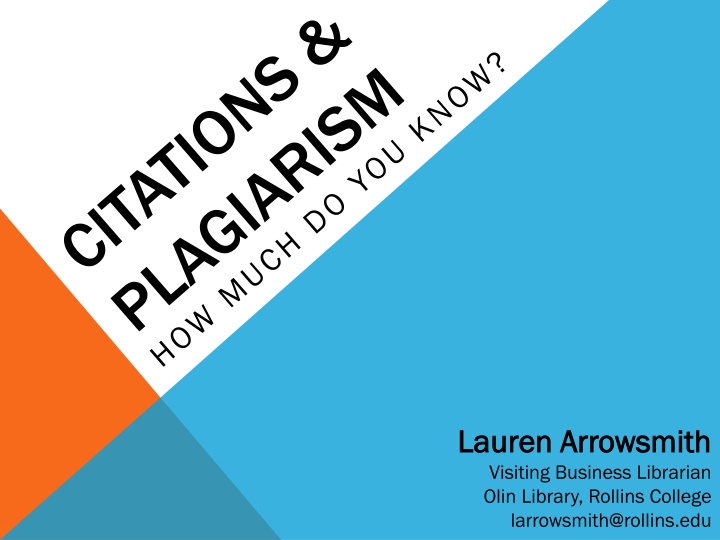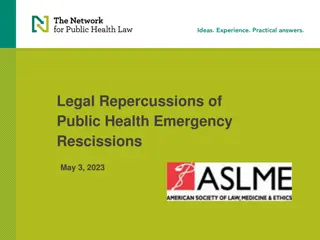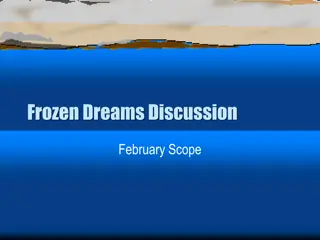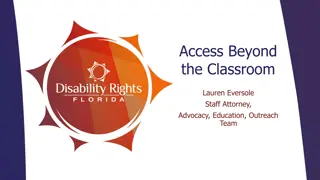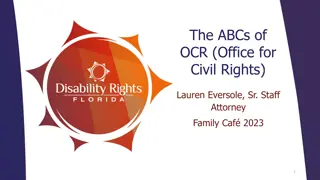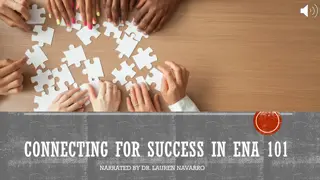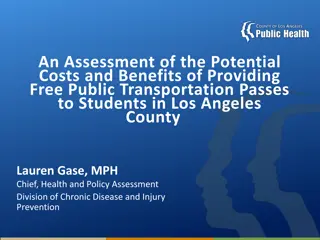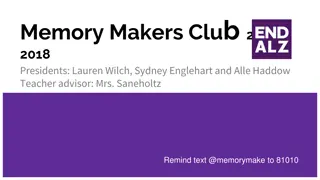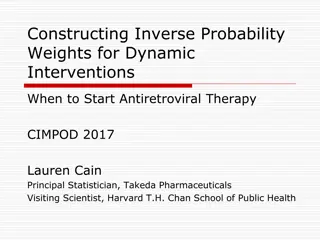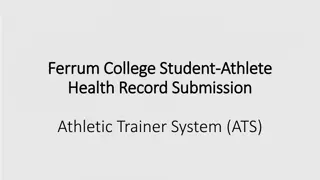Lauren Arrowsmith
Lauren Arrowsmith is the Visiting Business Librarian at Olin Library, Rollins College. She can be contacted at larrowsmith@rollins.edu. With a focus on providing essential resources and support to students and faculty in the business field, Lauren plays a crucial role in enhancing the academic experience at Rollins College. As a dedicated professional, she is committed to promoting research, information literacy, and innovation within the library setting.
Download Presentation

Please find below an Image/Link to download the presentation.
The content on the website is provided AS IS for your information and personal use only. It may not be sold, licensed, or shared on other websites without obtaining consent from the author.If you encounter any issues during the download, it is possible that the publisher has removed the file from their server.
You are allowed to download the files provided on this website for personal or commercial use, subject to the condition that they are used lawfully. All files are the property of their respective owners.
The content on the website is provided AS IS for your information and personal use only. It may not be sold, licensed, or shared on other websites without obtaining consent from the author.
E N D
Presentation Transcript
Lauren Arrowsmith Lauren Arrowsmith Visiting Business Librarian Olin Library, Rollins College larrowsmith@rollins.edu
QUESTION 1: You You do research and take notes in your own do research and take notes in your own words. Later, when typing your paper, you do not words. Later, when typing your paper, you do not give credit to the author because you are not give credit to the author because you are not using the author s exact words. You are using the author s exact words. You are plagiarizing your research. plagiarizing your research. TRUE or TRUE or FALSE FALSE? ? TRUE. TRUE. Broussard, M. and Oberlin, J. U. (2014). Goblin Threat Plagiarism Game. Retrieved February 5, 2015, from http://www.lycoming.edu/library/instruction/tutorials/plagiarismGame.aspx.
QUESTION 2: You find an article online for your PPT presentation which You find an article online for your PPT presentation which addresses issues you have been discussing in class. How addresses issues you have been discussing in class. How can you reasonably include a direct quote from this article can you reasonably include a direct quote from this article in your presentation? in your presentation? (a) (a)a a parenthetical citation on that particular slide; parenthetical citation on that particular slide; (b) (b)a a citation on a works cited slide; citation on a works cited slide; (c) (c) both both A and B; A and B; (d) (d)formal formal citations are not needed for PPT citations are not needed for PPT presentations. presentations. C. C. Broussard, M. and Oberlin, J. U. (2014). Goblin Threat Plagiarism Game. Retrieved February 5, 2015, from http://www.lycoming.edu/library/instruction/tutorials/plagiarismGame.aspx.
QUESTION 3: Making up citations for a paper because Making up citations for a paper because you took sloppy notes you took sloppy notes is is plagiarism. plagiarism. TRUE TRUE or or FALSE? FALSE? TRUE. TRUE. Broussard, M. and Oberlin, J. U. (2014). Goblin Threat Plagiarism Game. Retrieved February 5, 2015, from http://www.lycoming.edu/library/instruction/tutorials/plagiarismGame.aspx.
QUESTION 4: If you If you have multiple have multiple articles that you: you: (a) (a)must must always cite all sources; always cite all sources; (b) (b)only only need to cite one source, it doesn t matter need to cite one source, it doesn t matter which one; which one; (c) (c) only need only need to cite the source which to cite the source which contains most most information information, but more adds credibility; , but more adds credibility; (d) (d)don t need to cite any material since it is common don t need to cite any material since it is common knowledge. knowledge. articles that cover similar cover similar information, information, contains the the C. C. Broussard, M. and Oberlin, J. U. (2014). Goblin Threat Plagiarism Game. Retrieved February 5, 2015, from http://www.lycoming.edu/library/instruction/tutorials/plagiarismGame.aspx.
QUESTION 5: You find an article that is perfect for your research paper. You find an article that is perfect for your research paper. You know you should not copy entire sentences word You know you should not copy entire sentences word- -for word. Instead, you rearrange the sentences and replace word. Instead, you rearrange the sentences and replace the descriptive words with your own. You also add a the descriptive words with your own. You also add a complete footnote citing the page and the source. T complete footnote citing the page and the source. This is an an act of act of plagiarism. plagiarism. for- - his is TRUE or FALSE? TRUE or FALSE? TRUE. TRUE. Hayes, S. (2003). Xtreme Plagiarism Game. Retrieved February 5, 2015, from http://www.nwmissouri.edu/library/courses/research/xplag.html.
QUESTION 6: You are reading a book that cites a very pertinent article You are reading a book that cites a very pertinent article on your research topic. You forget to obtain a copy of the on your research topic. You forget to obtain a copy of the article. Despite this, you include a summary of the article s article. Despite this, you include a summary of the article s findings in your paper, written in your own words, and add findings in your paper, written in your own words, and add a footnote to cite it. I a footnote to cite it. Including ncluding this information into your this information into your paper paper is an is an act of act of plagiarism. plagiarism. TRUE or FALSE? TRUE or FALSE? FALSE. FALSE. Hayes, S. (2003). Xtreme Plagiarism Game. Retrieved February 5, 2015, from http://www.nwmissouri.edu/library/courses/research/xplag.html.
QUESTION 7: What What information must you cite in your research paper? information must you cite in your research paper? (a) (a) common knowledge; common knowledge; (b) (b) all statistics, data, and figures; all statistics, data, and figures; (c) (c) references to studies done by others; references to studies done by others; (d) (d) references to specific facts the average reader references to specific facts the average reader would not know about unless he/she had done the would not know about unless he/she had done the research. research. (Hint: There may be more than one correct answer) B, C, & D. B, C, & D. Brennecke, P. Avoiding plagiarism: What is common knowledge? Retrieved February 5, 2015, from http://www.upenn.edu/academicintegrity/ai_common%20knowledge.html.
WHAT IS COMMON KNOWLEDGE? Common knowledge is any information that Common knowledge is any information that is widely accessible, likely to be known by a lot of people, and can be found in a general to be known by a lot of people, and can be found in a general reference resource. reference resource. is widely accessible, likely This This includes: includes: General information that most people General information that most people know at 32 degrees Fahrenheit. Information Information shared by a cultural group shared by a cultural group, such as the dates of national holidays or names of famous heroes. Knowledge Knowledge shared by members of a certain field shared by members of a certain field, such as the fact that a SWOT analysis measures a company s Strengths, Weaknesses, Opportunities, and Threats. know, such as: water freezes Brennecke, P. Avoiding plagiarism: What is common knowledge? Retrieved February 5, 2015, from http://www.upenn.edu/academicintegrity/ai_common%20knowledge.html.
SHOULD THIS BE CITED? Pterosaurs were the flying reptiles of the dinosaur Pterosaurs were the flying reptiles of the dinosaur age. age. NO NO IT S COMMON KNOWLEDGE, SO NO CITATION IS NEEDED. IT S COMMON KNOWLEDGE, SO NO CITATION IS NEEDED. Even the largest pterosaurs may have been able to take off simply by spreading Even the largest pterosaurs may have been able to take off simply by spreading their wings whilst facing into a moderate breeze their wings whilst facing into a moderate breeze. . YES YES IT S NOT COMMON KNOWLEDGE, SO A CITATION IS NEEDED. IT S NOT COMMON KNOWLEDGE, SO A CITATION IS NEEDED. CITATION: CITATION: Wilkinson, M.T., Unwin, D.M. and Ellington, C.P. (2005). High lift function of the Wilkinson, M.T., Unwin, D.M. and Ellington, C.P. (2005). High lift function of the pteroid pteroid bone and bone and forewings forewings of pterosaurs. Proc. R. Soc. of pterosaurs. Proc. R. Soc. Lond Lond. . B B University of Cambridge. (2014). What is common knowledge? How to avoid accidental plagiarism. Retrieved February 5, 2015, from http://www.admin.cam.ac.uk/univ/plagiarism/students/referencing/commonknowledge.html. .
THE BENEFITS OF CITING SOURCES Avoids plagiarism Avoids plagiarism Respects intellectual property Respects intellectual property Helps the reader find your sources Helps the reader find your sources Adds credibility to your paper Adds credibility to your paper Broussard, M. and Oberlin, J. U. (2014). Goblin Threat Plagiarism Game. Retrieved February 5, 2015, from http://www.lycoming.edu/library/instruction/tutorials/plagiarismGame.aspx.
PARAPHRASING TIP When paraphrasing, one way to be sure you aren t plagiarizing the When paraphrasing, one way to be sure you aren t plagiarizing the text is to: text is to: Read the original source Close the original source Write what you want to say without looking at the original source Compare what you wrote with the original source to make sure you haven t used any phrases from that source if you have, enclose the phrase in quotation marks Add a parenthetical reference at the end of what you just wrote Add an entry for this source to the Reference List in your paper Hayes, S. (2003). Xtreme Plagiarism Game. Retrieved February 5, 2015, from http://www.nwmissouri.edu/library/courses/research/xplag.html.
THE MORAL OF THE STORY WHEN IN DOUBT, CITE! WHEN IN DOUBT, CITE! Questions? Ask your professor, or your Questions? Ask your professor, or your librarian (me!). librarian (me!).
HATE TYPING CITATIONS? Use a citation generator, such as Son of Use a citation generator, such as Son of Citation Machine Citation Machine www.citationmachine.net Use a Citation Management System, such Use a Citation Management System, such as Zotero as Zotero www.zotero.org
REFERENCES Brennecke, P. Avoiding plagiarism: What is common knowledge? Retrieved February 5, 2015, from http://www.upenn.edu/academicintegrity/ai_common%20knowledge.html. Broussard, M. and Oberlin, J. U. (2014). Goblin Threat Plagiarism Game. Retrieved February 5, 2015, from http://www.lycoming.edu/library/instruction/tutorials/plagiarismGame.aspx. Cimasko, T. (2013). Paraphrasing. Retrieved February 9, 2015, from https://owl.english.purdue.edu/owl/resource/976/02/. Hayes, S. (2003). Xtreme Plagiarism Game. Retrieved February 5, 2015, from http://www.nwmissouri.edu/library/courses/research/xplag.html. University of Cambridge. (2014). What is common knowledge? How to avoid accidental plagiarism. Retrieved February 5, 2015, from http://www.admin.cam.ac.uk/univ/plagiarism/students/referencing/commonknowledge.html.
